Plastic pollution is arguably one of the most challenging forms of contamination. It impacts terrestrial, freshwater, and marine ecosystems and the organisms in these habitats.
Discarded plastic not only looks unsightly; it kills. Wildlife often becomes entangled in plastic bags or other discarded plastic debris. It impairs their ability to forage or hunt for food and evade predators.
Often, it cuts into the victim’s flesh. And it causes open wounds that lead to a slow, agonizing death as wounds become infected or strangle animals.
Introducing recycling or cleaning up empty bottles may solve the plastic pollution problem. But the truth is that plastic waste generation can range in size from large to microscopic. So let’s discover what causes plastic pollution, the effects of plastic production, and how we can stop global plastic waste.
What is Plastic Pollution?
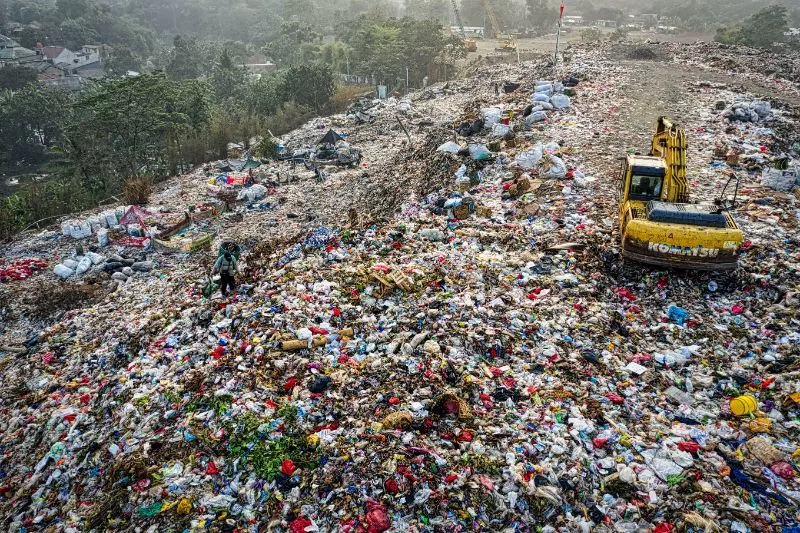
Plastic pollution is the accumulation of plastic items on the ground or in water. And it has a devastating impact on the lives of humans, birds, and animals.
Plastic pollution is hazardous to wildlife, wildlife habitat, and humans. And plastic waste inputs impact the land, air, waterways, and oceans.
Plastic is composed of synthetic resins derived from petroleum components. Plastic monomers are created in resins by mixing ammonia and benzene. Plastic comprises chlorine, fluorine, carbon, hydrogen, nitrogen, oxygen, and sulfur molecules.
Today, every country on the planet is dealing with the devastation of plastic pollution. Plastic pollution has harmed our country’s environment, particularly the urban environment. Animals are being killed in significant numbers in cities as a result of their use of plastic bags.
Because plastic materials are not degradable, it persists in nature indefinitely once generated due to the lack of any suitable micro bacterium that can destroy them in nature. It causes severe ecological imbalance.
It is also not dissolved because it is insoluble in water. It causes heavy ocean plastic pollution and reduces water flow on Earth. It results in filthy water that breeds flies, mosquitos, and dangerous pests that carry diseases like malaria and dengue.
Does Plastic Persist in the Environment?
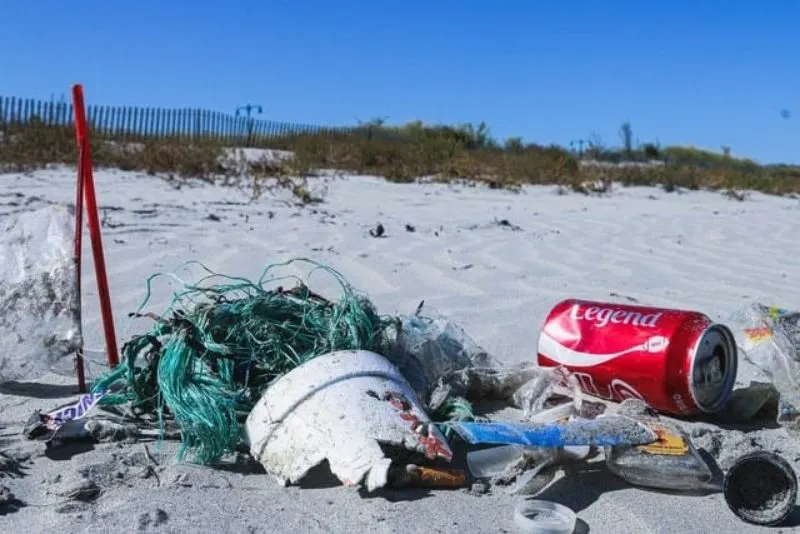
Plastic is a manufactured material designed to be durable and withstand the elements. So, it does not break down in the environment but persists for a long time.
When it starts to break down, it doesn’t disappear but instead breaks down into smaller and smaller pieces. It eventually resulted in gazillions of tiny plastic fragments – or microplastics – measuring less than 5mm.
Microplastic Particles
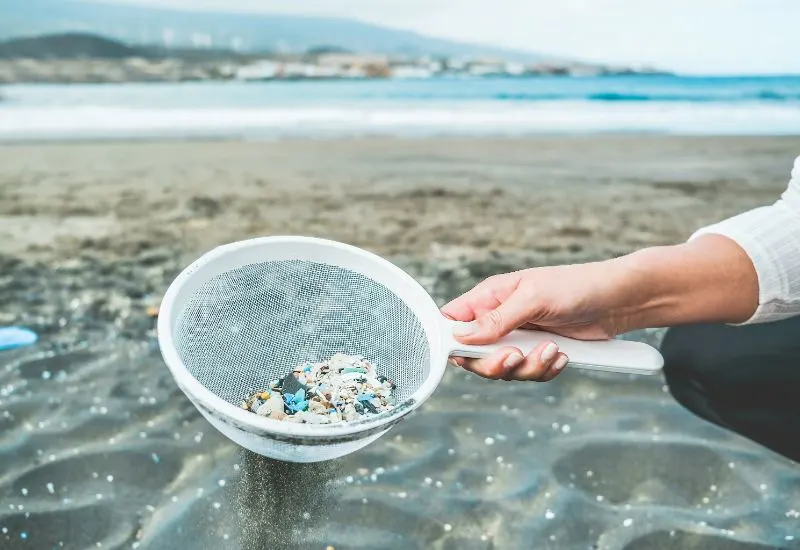
We consistently recognize plastic pollution on land as a huge environmental problem. And it has only been recently that the extent of marine plastic pollution has become apparent. This is partly because plastic tends to sink to the ocean depths, out of sight and out of mind.
But as more and more plastic debris washes up onto beaches around the world, people become aware of the existence of the Great Pacific Garbage Patch. It is an extensive area where plastic waste converges in the middle of the ocean. And conservationists are beginning to sit up, and alarm bells are starting to sound.
Microplastics are an emerging pollutant that scientists are particularly concerned about. Due to their tiny size, they have, until recently, slipped under the radar. But recent oceanic surveys have revealed that these tiny particles are abundant in all the world’s oceans. Scientists are particularly concerned about the impact on marine animals and higher predators, especially man, who relies on the world’s ocean for protein food.
Microplastics in the world’s oceans have increased over the last few decades. It is in line with an increase in the use of plastics and continues to grow further. More problematic is that more plastic is being discarded into the environment. And yet the existing plastic is not disappearing.
The result is an ocean accumulating more and more plastic and becoming a plastic soup, spiraling out of control. A study conducted in the North Pacific Central Gyre 2001 revealed that microplastics outweighed zooplankton by a ratio of 6:1!
Microplastics originate from plastics that have broken down into tiny fragments. It comprises small resin pellets shipped in bulk to manufacturers using them to produce plastic products. There is often spillage en route to their destination. And they are added to the environment before they are even used in manufacturing.
Other microplastics include minute plastic beads (< 1mm) used in cosmetic products, such as shower gels and facial scrubs, that make their way into the environment where they persist.
See Related: What Are Orbeez Made Of?
Carcinogenic Contaminants
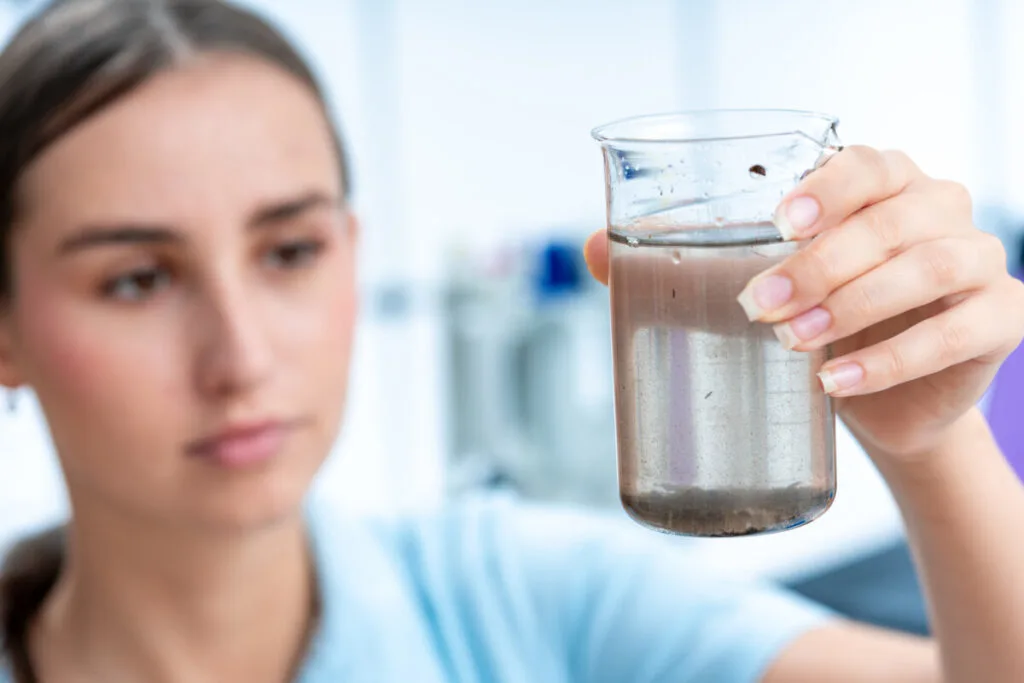
Plastic particles attract and accumulate carcinogenic pollutants. These include POPs (persistent organic pollutants), PCBs (polychlorinated biphenyls), brominated flame retardants, and DDT. These hazardous pesticides are banned in most countries yet persist in the environment. The levels are 100 thousand to 1 million times greater than those in the surrounding seawater.
POPs accumulate in the organs and fatty tissue of animals that consume them. Top predators, such as predatory fish, marine mammals, and humans, are even more vulnerable. It is because POPs bioaccumulate and become more concentrated in animals further up the food chain.
Furthermore, these pollutants continue to accumulate throughout the animal’s lifetime. More and more toxins build up within their system, which can cause adverse health effects, reproductive problems, growth defects, immune deficiencies, and cancer.
See Related: Best Eco-Friendly Trash Bags
What’s causing plastic pollution?
Plastic pollution is a growing problem that affects not only our oceans and marine life but also our communities, health, and the environment. It is caused by the excessive production and disposal of single-use plastics, as well as inadequate waste management practices and littering.
Plastic is utilized for almost everything. A single-use beverage bottle. A lunchbox snack wrapper. Food packaging for pasta that will be served at supper. It’s a direct result of our disposable, throwaway consumer culture.
Corporate offenders rely on it, and governments have failed to handle the issue adequately by focusing on recycling and waste rather than reducing, reusing, and refilling. Aside from these, here are several causes of plastic pollution caused by human activities:
1. Plastic Production Overuse
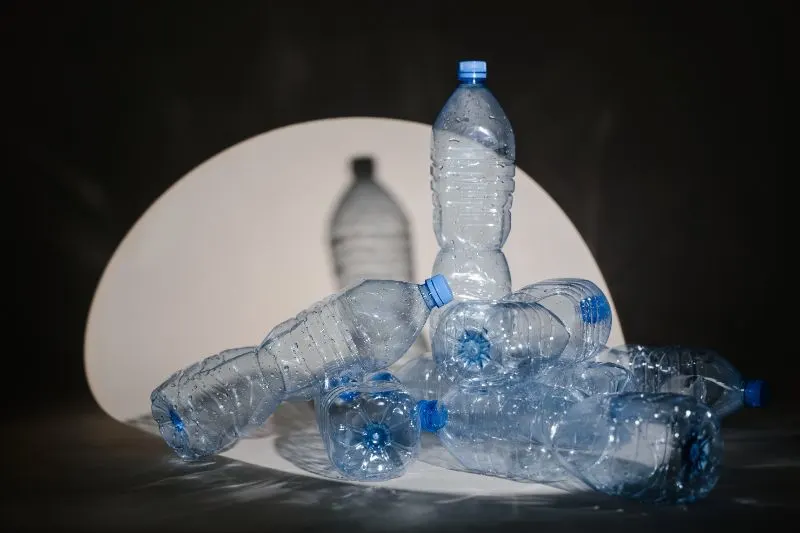
One crucial reason for plastic pollution is that plastic is used excessively in today’s culture. You can find plastic production in packaging and many other things used daily.
Plastic produced can also be found in our clothing in polyester, which is employed in the fashion industry. Furthermore, our drinking water is sold in plastic bottles. Plastic demonstrates a convenient way for businesses to make and sell things to customers. But, this results in the excessive use of plastic.
Plastic is one of the world’s most available and misused materials today since it is less expensive. Rapid urbanization and population growth drive up demand for low-cost plastics. Because it is a cheap and long-lasting material, it is used in everything from packaging materials to plastic bottles and containers, straws, and plastic carry bags.
We also have a throwaway mentality because they are so cheap. We don’t consider them enough to keep individual items. When burned in the open air, it does not degrade and pollutes the ground or air around it.
See Related: Best Eco-Friendly Water Bottles to Buy
2. Plastic Disposal Problems
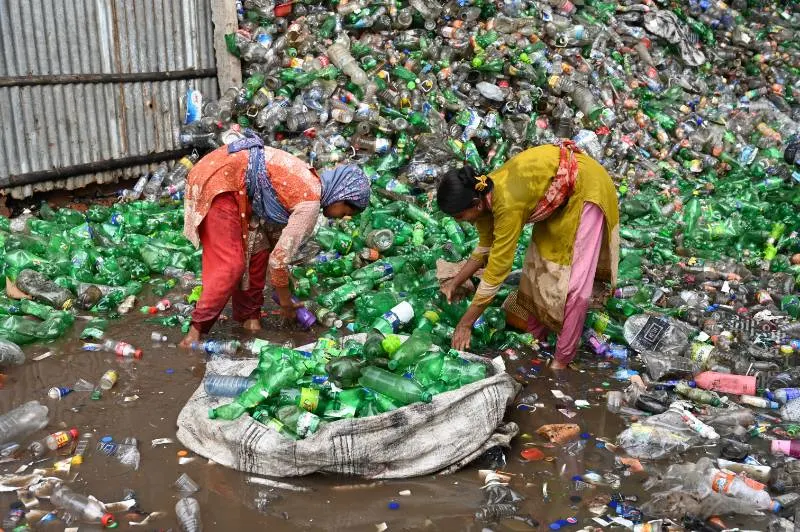
Plastic waste is mismanaged and ends up in landfills. It may sound perplexing, but it isn’t easy to degrade because plastic is designed to persist. Burning plastic is toxic and can result in hazardous air conditions and fatal illnesses. As a result, if it is in a landfill, it will never stop emitting toxins in that location.
Even recycling does not reduce plastic use because it reuses existing plastic differently. We can release plastic irritants in various ways during the recycling process.
The cycle continues to replicate as more plastic goods are made daily. This cycle of creating and disposing of plastic items will continue unless businesses use more sustainable alternative materials (such as paper).
See Related: Ways to Conserve Natural Resources
3. Overpopulation

Overpopulation is a significant factor contributing to plastic pollution. It is evident in the increasing population leading to increased consumption and waste generation. With more people, there is a higher demand for goods and services. And it leads to more plastic production, plastic packaging, and containers.
Additionally, overpopulated areas often need more waste management systems. And they need help to handle the growing amount of waste generated. It can lead to littering, dumping, and inadequate disposal of plastic waste. And it ultimately ends up in our oceans and other natural habitats.
Moreover, due to limited resources and infrastructure, overpopulated cities often need help with proper waste management practices. Plastic waste needs to be properly collected, sorted, and recycled, leading to plastic release into the environment. It affects wildlife, harms human health, and impacts local communities.
See Related: What Is the Main Effect of Overpopulation on Animals?
4. Plastic takes 400 years and even more to Decompose
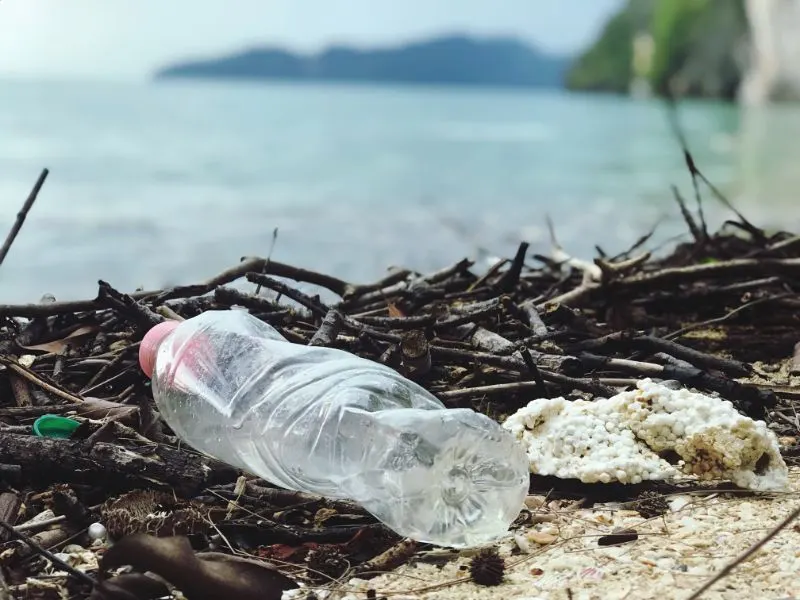
Plastic significantly contributes to plastic pollution due to its slow decomposition rate. Unlike organic materials that break down and return to the soil, plastic takes hundreds of years to degrade, if at all.
Plastic types can take over 400 years or more to decompose. It means that every piece of plastic ever produced still exists in some form today. And it will continue to persist in the environment for centuries to come.
The slow decomposition of plastic leads to the accumulation of plastic waste in our oceans, landfills, and natural habitats. Plastic litter, such as discarded packaging and single-use items, can make its way into the environment, posing a threat to wildlife and marine life. Plastic ingestion in animals can lead to physical harm, starvation, and even death.
Furthermore, as plastic degrades, it breaks down into smaller and smaller particles, known as microplastics. These are ingested by wildlife and can enter the food chain. It affects the health of nature and has the potential to impact human health as well.
5. Commercial Fishing
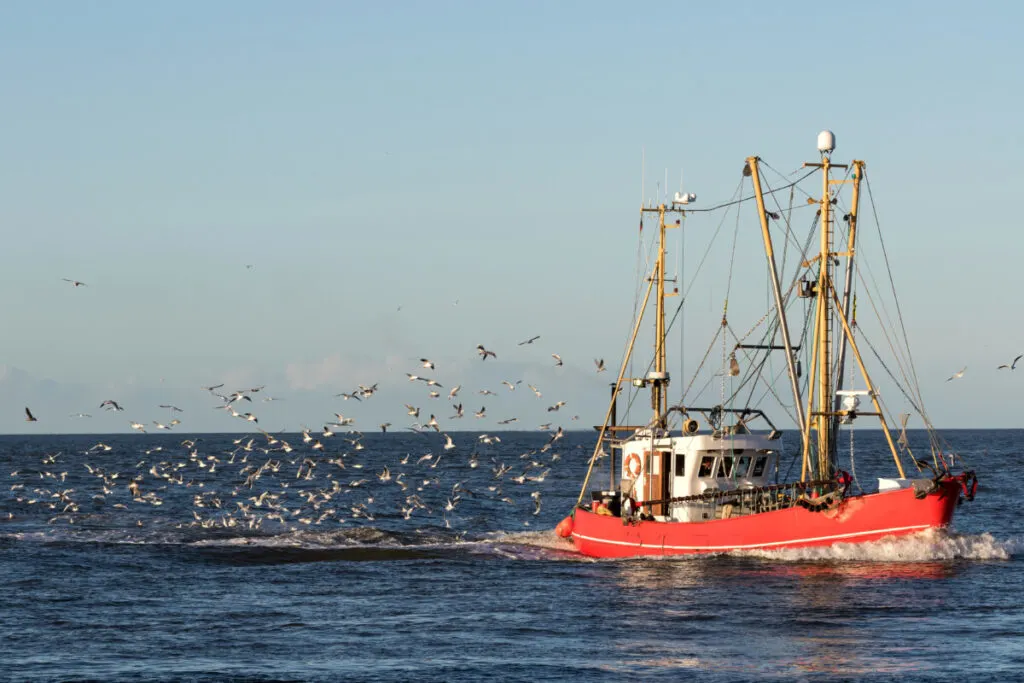
Commercial fishing is an economic necessity in many parts of the world. And millions of people rely on fish for survival. But, in many ways, this industry has contributed to the problem of ocean pollution. Plastic nets are utilized in certain large-scale trolling activities.
For starters, these are submerged in water, leaking toxins at will. And they are also frequently broken apart or lost, falling wherever they may.
Plastic waste is washed up on beaches by ships and fishing nets. It not only kills and hurts local species. But it also pollutes the water and causes marine animals to become entangled in nets and swallow harmful particles.
See Related: What is Overfishing? Examples & Solutions to Prevent
Effects of Plastic Pollution
This amount of non-biodegradable stuff can wreak havoc on natural environments, causing long-term problems for plants, animals, and people. Some of the most severe long-term consequences of plastic pollution are:
1. Effect of Plastic Pollution on Wildlife
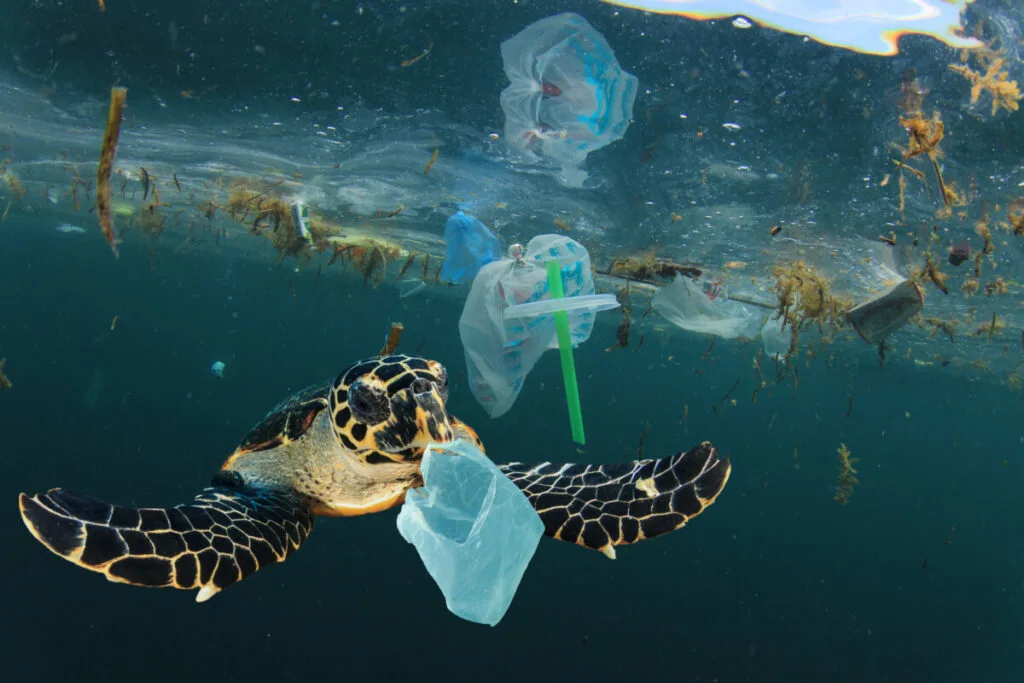
Birds, fish, reptiles, and mammals have all been known to eat discarded plastic items they mistake for food. And it accumulates over time in the animal’s gut as it is not digested.
It may result in a blockage or cause the animal to stop eating as it does not feel hungry. Either way, the unfortunate animal is likely to starve to death.
Seabirds, like albatrosses, are already endangered and mistakenly feed plastic objects and pellets to their chicks, who die as a result.
Predators higher up the food chain accumulate plastic they consume when they feed on prey that has consumed plastic. They, too, will have problems digesting and processing it.
2. Plastic Pollutes the Soil
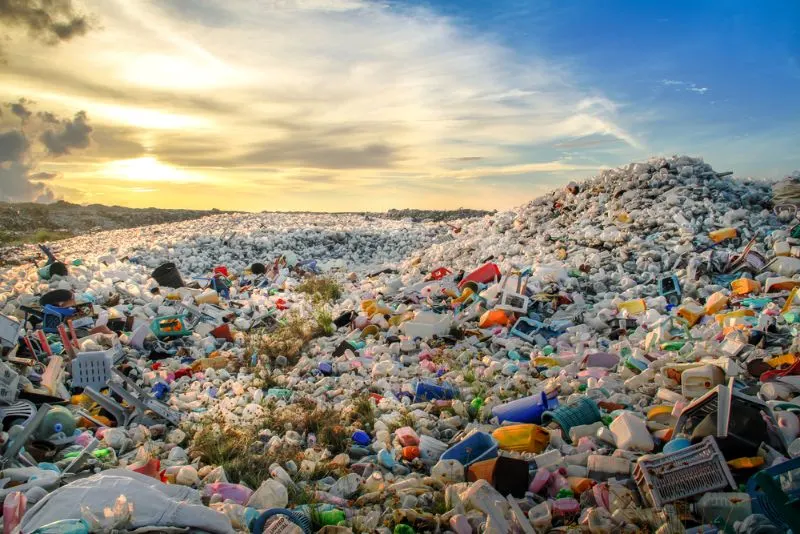
Plastics can release harmful chemicals into the surrounding soil. When this happens, those chemicals seep into the groundwater or other water source nearby and can impact our ecosystem. When plastics pollute the ground, they can also harm the species that rely on and drink that water.
Additionally, throwing a plastic bag or other plastic material out can make the soil less fertile. Those toxic substances and chemicals can also be deposited into the ground, surface water, and plants when burned. Plastic pollution affects the earth by clogging soil pores, preventing aeration, and can cause the roots to die.
It has been found that approximately one-third of all plastic waste is in our soil or freshwater. So you can see that our oceans and marine ecosystem are not the only things in our environment affected by plastic pollution. It was found that terrestrial microplastic pollution is higher than marine microplastic pollution.
3. It Has Negative Effects on Human Health

We consume plastic-tainted seafood. Microplastics have been discovered in 114 marine species. And approximately one-third of these end up on our plates.
Plastic is consumed through food packaging affecting human health. BPAs, found in many plastic products that come into direct contact with food, are processed in the liver to generate Bisphenol A, which is excreted in our urine.
We consume microplastics through bottled water. The WHO presented disturbing data in 2018 that confirmed the presence of microplastics in 90% of bottled water. And tests revealed that only 17 out of 259 were plastic-free.
We absorb plastic through our clothing, which is 70% synthetic and harmful to our skin. We even breathe plastic when we burn rubbish in the open air due to poor waste management.
See Related: Types of Waste Disposal: Methods and Approaches
4. Global Warming
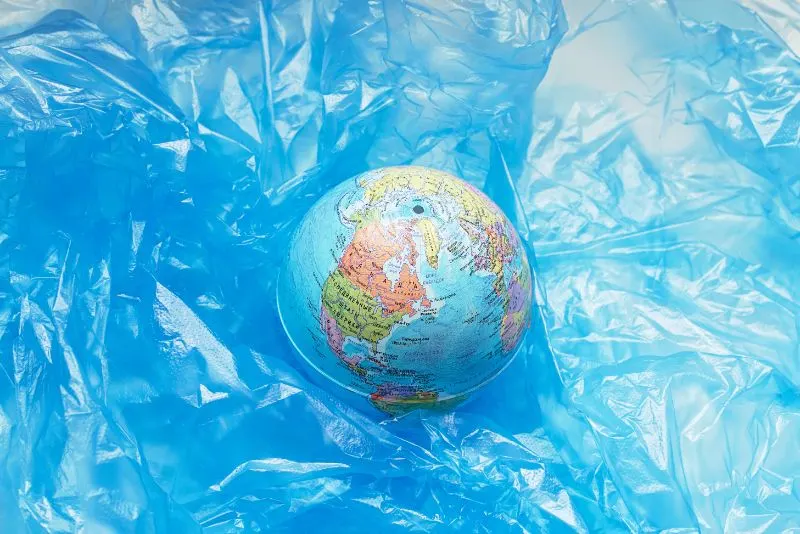
Pollution affects our oceans, wildlife, and communities and contributes to global warming. The production of plastic releases greenhouse gases into the atmosphere, contributing to climate change.
Additionally, plastic waste that ends up in landfills releases methane. It is a potent greenhouse gas that contaminates the atmosphere as it decomposes.
The production of plastic requires the use of fossil fuels, such as oil and natural gas. It emits carbon dioxide and other greenhouse gas emissions during extraction and refining.
The transportation of plastic products also contributes to emissions. Trucks, ships, and trains are used to transport plastic materials and products across the world.
Moreover, the disposal of plastic waste in landfills also contributes to global warming. Decomposition of plastic releases methane into the atmosphere.
It is particularly concerning as methane is estimated to be 28 times more potent as a greenhouse gas than carbon dioxide over a 100-year time frame.
See Related: Is it too late to stop climate change? fast facts to know
5. Economic Effects of Plastic Waste Generation
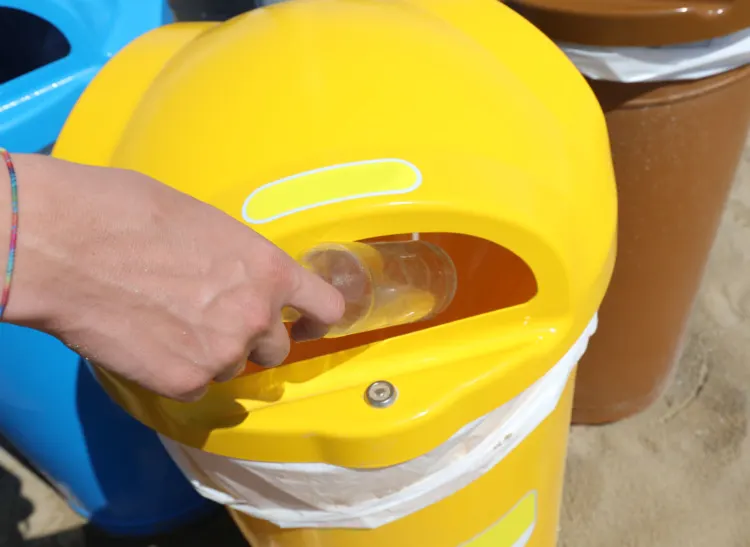
Plastic pollution devastates the environment, wildlife, and human health. And it also has a significant impact on the economy. The costs of plastic pollution are wide-ranging, affecting various industries and communities.
One of the main ways plastic pollution affects the economy is through the damage it causes to marine and coastal ecosystems. It can lead to the loss of valuable fishing grounds. And it impacts the livelihoods of fishing communities, reducing their income.
Plastic pollution can also damage tourism. Litter-strewn beaches and waterways are unattractive to visitors, leading to a decline in tourism revenue.
Additionally, plastic pollution can also increase the costs of waste management and cleanup efforts. Governments and local communities must often spend significant resources to clean litter and manage waste. And it diverts funds away from other essential services and development initiatives.
Moreover, plastic pollution can also impact the reputation and profits of companies. Consumers become concerned about the environmental impact of the products they buy.
Companies that fail to address plastic pollution may face negative publicity. And there might be potential boycotts, leading to declining sales and profits.
See Related: What Are The Effects of Overharvesting?
What Determines How Much Plastic Waste We Produce?
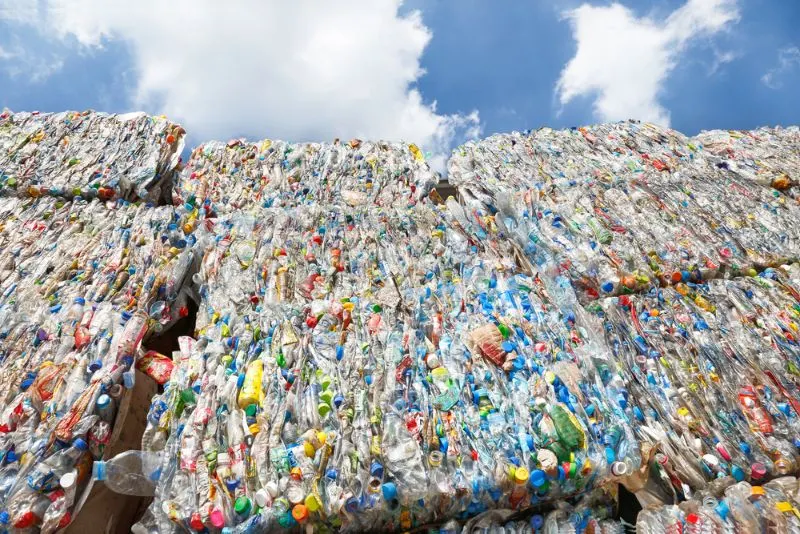
Did you know that a staggering 91% of plastic is not recycled? Out of the billions of plastic made over the last few decades, more are becoming trash and litter worldwide.
Only 12% of plastics have been incinerated. The rest take more than 400 years to degrade, causing them to still exist in our environment in some form.
To calculate your plastic footprint and estimate what your annual plastic consumption is, try the following:
- Start by looking at your needs and shopping habits. How many plastic bags do you use per week? How many disposable plastic water bottles? Count everything and add it up. We bet you will be surprised.
- Now let’s take a closer look at your laundry habits, cleaning, and bathroom needs. Consider your cotton swabs, detergents, shampoo bottles, toothpaste, and toothbrushes. How many of these are you going through?
- Disposable waste and takeout containers. How many times do you go out to eat during the week? And do you receive plastic material in the form of beverage containers, plastic straws, and plastic packaging?
Once you have all your numbers, add them up and see your yearly plastic consumption. Once you understand this, you can begin to change some habits and reduce the plastic waste and pollution in your life.
See Related: Types of Waste Disposal
What Can You Do?
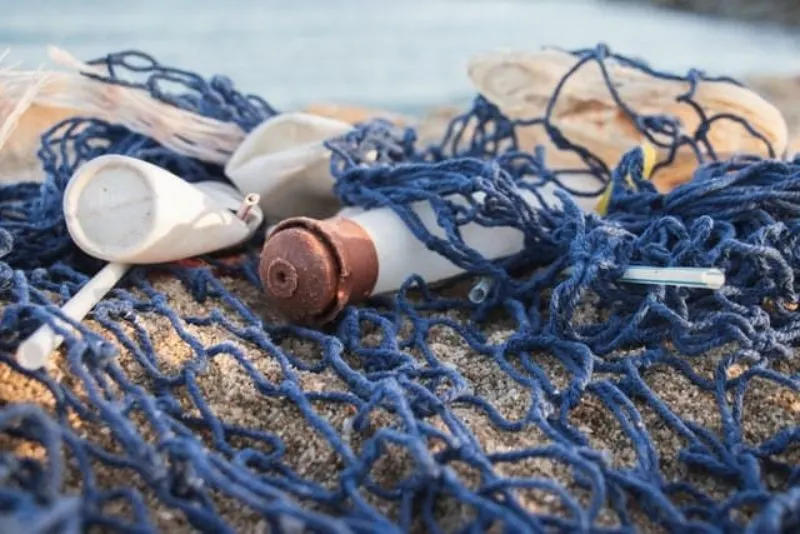
Plastic pollution is one of the greatest threats to the oceans worldwide. Plastic manufacturing is skyrocketing, recycling is reaching low levels, and better waste management must be managed.
All this means that between 4 and 12 million metric tons of plastic will enter the oceans yearly. And these numbers are projected to triple over the next 20 years.
When this plastic pollution makes its way to our oceans, it affects sea turtles, whales, fish, sharks, coral reefs, and other marine life and habitats.
It can damage the otherwise beautiful coastlines and beaches. And it impacts the more isolated and remote areas. So here are the things we can do to stop ocean plastic pollution and reduce global plastic waste:
See Related: Types of Monkeys from Around the World
1. Reduce the Use of Single-Use Plastics
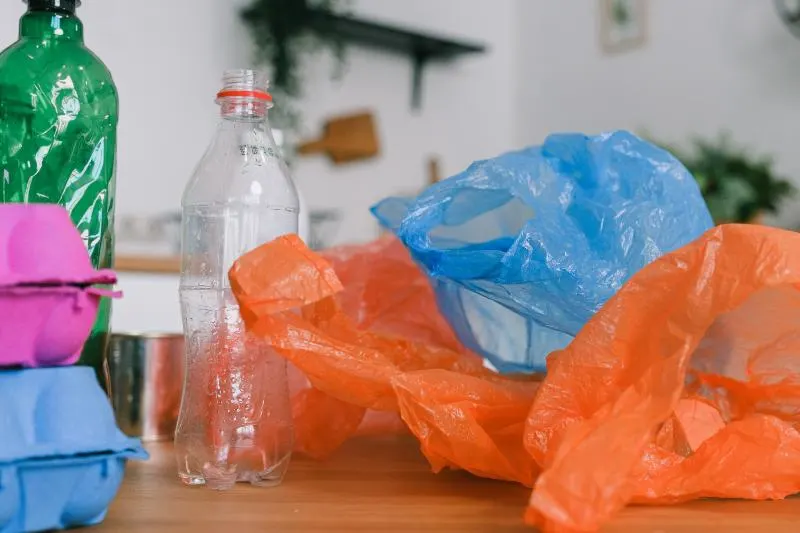
In preventing plastic trash from making its way to our marine environment and soil, there are a few things we can do to take action and reduce our use of plastic. One of the easiest and most direct ways to achieve this is by limiting our use of single-use plastic items.
It includes using plastic bags, straws, bottles, and takeout utensils. Also, limit takeout containers made with plastic packaging and other similar items.
Instead, try reusable versions of these items, like reusable tote bags. Use reusable water bottles and real utensils to reduce plastic consumption.
Other ways you can reduce plastic pollution include:
- Refuse plastic shopping bags – use reusable shopping bags instead.
- Use wax sandwich wrap or reusable sandwich boxes rather than plastic sandwich wrap or plastic sandwich bags.
- Use a refillable bottle for drinking water. Use a water filter if necessary – rather than bottled water packaged in disposable plastic bottles.
- Buy stainless steel or glass storage containers rather than Tupper Ware or similar plastic containers.
- Consider the environmental footprint of everything you buy. For example, choose wooden pegs rather than plastic pegs. Opt for products with minimal or no packaging or eco-friendly biodegradable alternatives to plastic or polystyrene foam packaging.
2. Learn How to Properly Recycle
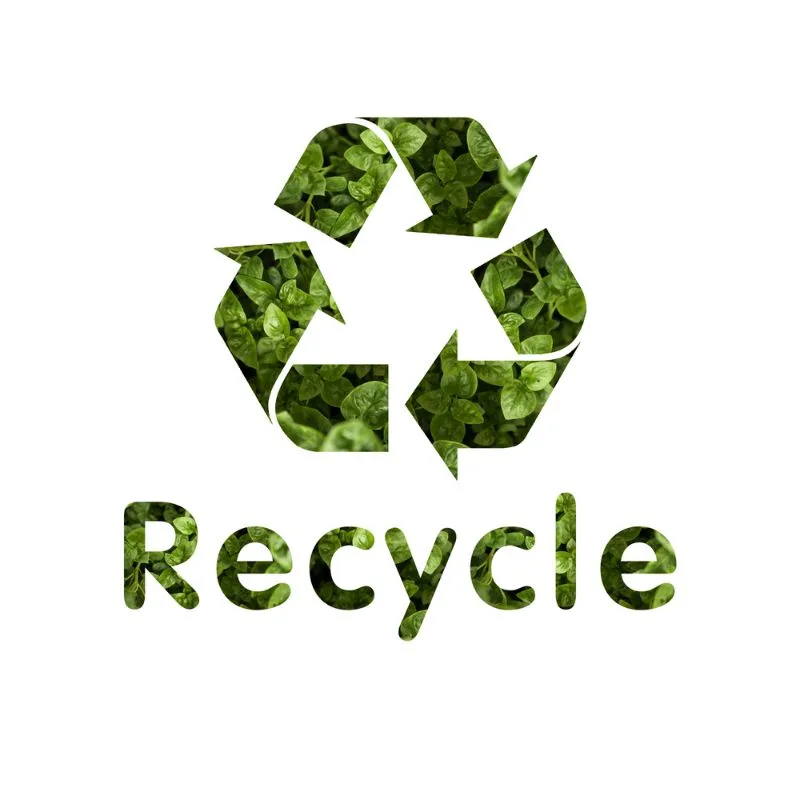
If you use single-use plastic products, you must know how to recycle them to reduce plastic pollution. When we recycle, we are cutting down on the plastics that find their way to the oceans. And we are reducing the number of new plastics we put into circulation.
For help finding a recycling center for plastic waste near you, visit Earth911’s recycling directory. You can also look for your local recycling center and see what plastic types they currently accept.
See Related: Biodegradable vs Compostable
3. Avoid Products Containing Microbeads
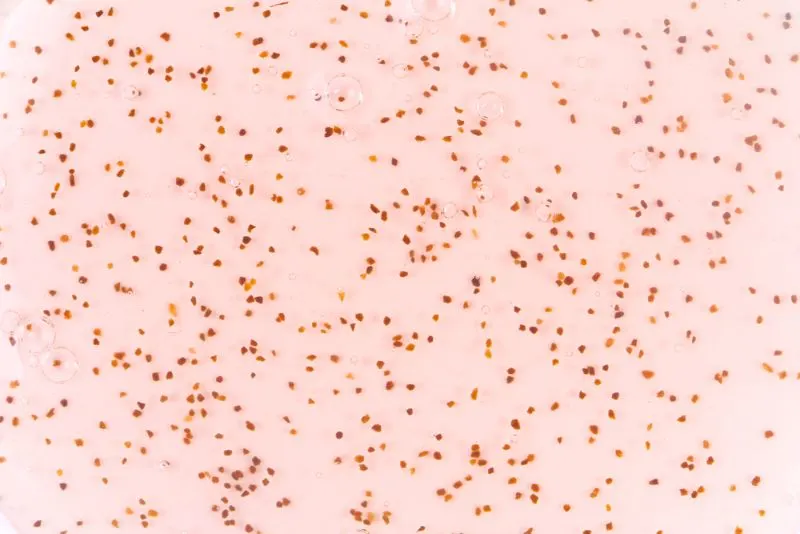
Microbeads, or tiny plastic particles, have become a huge source of plastic pollution over the years. Microbeads make their way to our oceans through sewer lines. And they are often found in face scrubs, toothpaste, and body washes.
So, to reduce plastic pollution, avoid using any products containing polyethylene and polypropylene. Always read the ingredient labels on each product you use.
4. Reduce Plastic Consumption and Make Better Choices at Home

We all have a role in reducing plastic pollution, and making better choices at home is a great place to start. Simple changes in our daily routines can significantly impact reducing plastic waste. And it helps preserve the health of our planet and its inhabitants.
We can reduce our carbon footprint and help reduce plastic pollution by making sustainable choices in our daily routines. For example, we can switch to energy-efficient light bulbs.
We can reduce our use of water. We can limit the use of single-use plastic products by opting for reusable alternatives.
Another way to reduce plastic pollution is to be mindful of packaging when shopping. Choose products with minimal packaging. Or you can opt for packaging made from sustainable materials such as paper, glass, or metal.
Additionally, we can support companies taking steps to reduce their plastic footprint. Support those using more sustainable packaging materials or implementing recycling programs.
Furthermore, properly disposing of plastic waste is crucial in reducing plastic pollution. It includes appropriately disposing of plastic waste in designated waste bins and participating in recycling programs. By properly disposing of waste, we can prevent it from entering the environment and causing harm to wildlife and marine life.
See Related: Easy Ways To Reduce Waste at Home
6. Switch to organic food stores
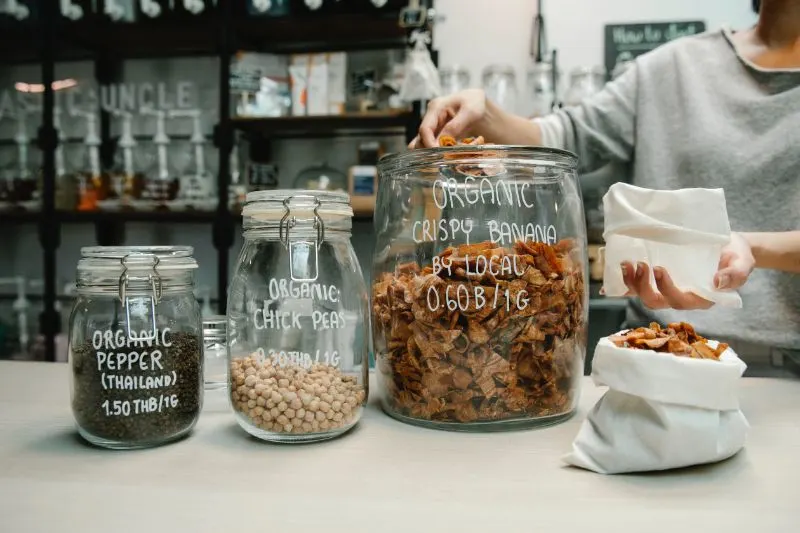
Switching to organic food stores is one way to reduce plastic footprint and help prevent plastic pollution. Organic food stores often place a strong emphasis on sustainability and reducing waste. And as a result, they often use less plastic in their operations.
One of the most significant ways organic food stores help reduce plastic pollution is through bulk bins. Rather than packaging products in individual plastic containers, bulk bins allow customers to buy only the needed amount.
It reduces waste and the need for plastic packaging. It reduces the amount of plastic waste generated. And it also saves customers money, as they only pay for what they need.
Also, organic food stores often use compostable or biodegradable packaging for products such as produce, bakery, and deli items. It reduces the amount of plastic waste in landfills and the environment, helping to prevent plastic pollution.
Moreover, organic food stores often work with suppliers committed to sustainability and reducing waste. And it helps to reduce the plastic footprint of the products sold. It includes using more sustainable packaging materials, such as cardboard and paper, rather than plastic.
7. Support brands that avoid plastic

Supporting brands that avoid plastic is an effective way for individuals to reduce their plastic footprint. And it helps prevent plastic pollution.
Choose to buy from companies that focus on sustainability and reducing plastic waste. And we can drive change and encourage the widespread adoption of more sustainable practices.
One of the main ways that brands can reduce plastic waste is by using alternative packaging materials. It includes using biodegradable or compostable materials, such as paper, cardboard, or bamboo, instead of plastic. By choosing products packaged in these materials, we can help reduce the amount of plastic waste generated and prevent plastic pollution.
Another way that brands can reduce plastic waste is through refill and reuse systems. It includes refillable packaging for products such as shampoo, laundry detergent, and hand soap. It can be refilled many times, reducing the need for single-use packaging.
By supporting brands that offer these systems, we can help reduce the amount of plastic waste generated. And we can encourage more sustainable practices.
See Related: Best Eco-Friendly Bathroom Products to Buy Today
8. Government regulations and Higher taxes on plastics

Government regulations and higher taxes on plastics are essential tools for reducing plastic pollution. Governments can help to reduce the amount of plastic waste generated and prevent plastic pollution. And it can be through implementing policies that discourage single-use plastic.
One of the most effective ways governments can reduce plastic waste is by implementing plastic bag taxes or bans. Governments can encourage businesses to switch to reusable alternatives like cloth bags.
They can do it by placing a financial burden on single-use plastic bags. And it can result in a significant reduction in the number of plastic bags generated. And it helps to prevent plastic pollution.
Additionally, governments can also regulate the use of single-use plastic items. By implementing bans or fees on these items, governments can reduce the amount of plastic waste generated. And they can encourage the use of reusable alternatives.
Furthermore, governments can also put in place regulations on the packaging industry. And push them to reduce the amount of plastic waste generated.
It requires companies to use more sustainable packaging materials, such as paper or cardboard, rather than plastic. And encourage them the refill and reuse systems.
See Related: Best Solutions to Climate Change
9. Get Involved, Create Awareness, and Convince others to do the same
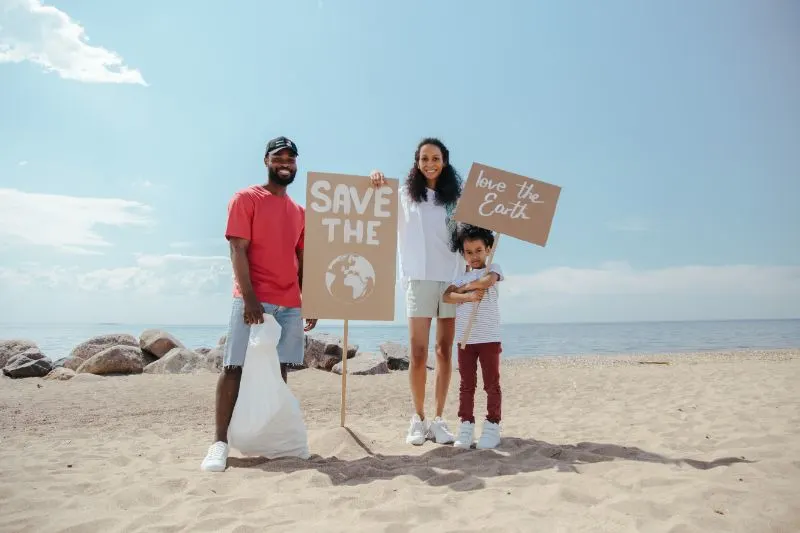
Getting involved, creating awareness, and convincing others to do the same are crucial in reducing plastic pollution. We must take an active role in educating ourselves and others. And we can help to raise awareness about the issue and encourage widespread change.
One way to get involved is by spreading awareness about the issue. You can share information about the impact of plastic pollution on the environment, wildlife, and human health. And you can also share tips for reducing plastic waste. By educating others, we can raise awareness and encourage widespread change.
Furthermore, we can make a more considerable impact by getting involved in community or environmental organizations. These organizations work on the front lines to address ecological issues. And by supporting them, we can help to create positive change.
Finally, by speaking out and advocating for change, we can influence policymakers and businesses to make changes that will help reduce plastic pollution. By contacting elected officials and sharing our concerns, we can help push for policies and regulations to reduce plastic waste and prevent plastic pollution.
In conclusion, getting involved, creating awareness, and convincing others to do the same are critical steps in reducing plastic pollution. By taking action, we can positively impact and help create a more sustainable future for generations.
See Related: 14 Environmental Organizations in California
FAQs
How long does it take for plastic to decompose?
Plastics can take hundreds of years to decompose. It means they persist in the environment for a long time and contribute to this global catastrophic phenomenon.
How much is plastic waste generated every year?
Approximately 300 million tons of plastic waste are generated each year. And only a small portion is recycled. The rest ends up in landfills, contributing to plastic generation.
What are alternatives to single-use plastics?
There are many alternatives to single-use plastics. It includes reusable bags, water bottles, and food containers made from stainless steel, glass, and cloth. These alternatives can help reduce the amount of plastic waste generated. And it helps reduce the impact of plastic pollution on the environment.
Can recycling solve the problem of plastic pollution?
Yes, recycling can help reduce the amount of plastic waste in the environment. But it is not a complete solution to the global problem. There are many plastic types we cannot recycle. And even when they are, there is a risk that they will end up in landfills or the natural environment.
What role do companies have in reducing plastic pollution?
Companies have a significant role to play in reducing plastic pollution. They must change their practices and reduce the plastic waste they generate. It can include using more sustainable packaging, investing in research, and developing alternatives to single-use plastics. And advocating for policy changes to reduce plastic pollution.
Can plastic pollution be cleaned up and what are the challenges?
While some efforts to clean up plastic pollution are underway, it is a significant challenge. It is due to the sheer scale of the problem and the difficulty of removing plastic from the environment once it has been dispersed. Additionally, many of the most affected areas, such as remote islands and the deep ocean, are difficult to access and clean up.
Related Resources
